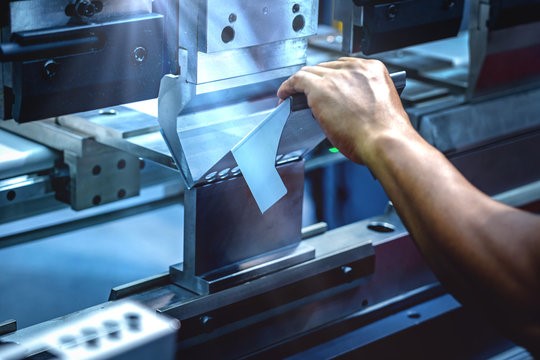Sheet metal fabrication involves hundreds of manufacturing techniques for forming metal sheets into the desired shape. The construction of a product or object is a step-by-step process from cutting and bending to surface treatment and assembling. Sheet metal fabrication techniques are usually applied, in the production of automobile parts and truck bodies, appliances, airplane fuselages and wings, tinplate for tin cans, roofing for buildings, etc.

In this blog, I will discuss some of the most chosen sheet metal fabrication techniques adopted by industries in various countries, including China.
Sheet Metal Fabrication Techniques
Cutting Metal
Cutting is the most basic technique used in the sheet metal fabrication manufacturing process. The process begins with cutting the metal or material into the desired form. The use of the cutting method depends on various factors, including the thickness of the metal and other requirements of the manufacturing project. There are a few ways that a manufacturer can choose to cut metal, including water jet, torching, shearing, sawing, etc.
Bending Metal
Cutting the metal is followed by bending the metal to get the form of the desired object. There are two ways that manufacturers use for bending the metal. First is the metal break technique, which involves placing one end of the sheet metal inside a gate, and the other end will be clamped in place with a bar. The part stuck inside the gate gets lifted, and the part of the metal under the bar stays put. The metal break then creates necessary bends in the metal piece.
Another technique used for bending is called form bending, which involves old-school ways of bending the sheet metal using hands.
Welding Metal
Welding of metal is needed during the assembly stage. There are several alternatives available to manufacturers for welding the parts together depending on the thickness of the material and the availability of welding equipment. The most common welding processes include MIG welding, TIG welding, and laser welding.
Shrinking Metal
Shrinking the metal is a significant step in the sheet metal fabrication process to smooth out dents and create the desired shape. Manufacturers use various methods for metal shrinking, including heat shrinking, tucking metal, and shrinker machines. The first two techniques are hand on approaches, while the shrinker machines automate the shrinking process.
Stretching Metal
It is the opposite of the shrinking metal technique. Sometimes the metal needs to be stretched, and there are several ways that manufacturers use for stretching the metal, including a stretcher machine, an English wheel, and the old school way using a hammer and anvil.
Finishing Metal
Once the metal has gone through several stages of production, including cutting, shrinking, stretching, and welding, it’s time to get to the final step of sheet metal fabrication manufacturing to finish the project. Adding a finish to the metal object is necessary to enable it to last longer and provide smooth performance. The common finishing techniques used by manufacturers include sandblasting, buff polishing, and metal plating/ coating.
Manufacturing processes have evolved significantly with technical innovation in this field. If you are looking for a manufacturing partner for your next project, make sure the company has access to the latest manufacturing techniques to provide you with the best services.
















